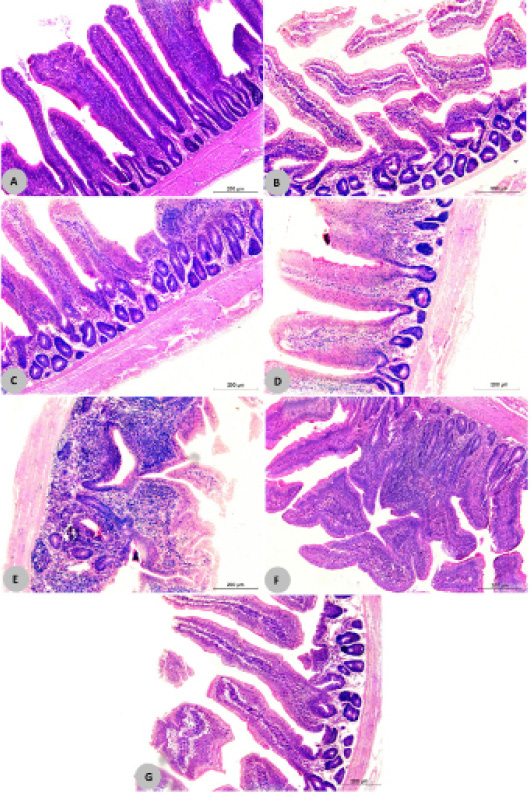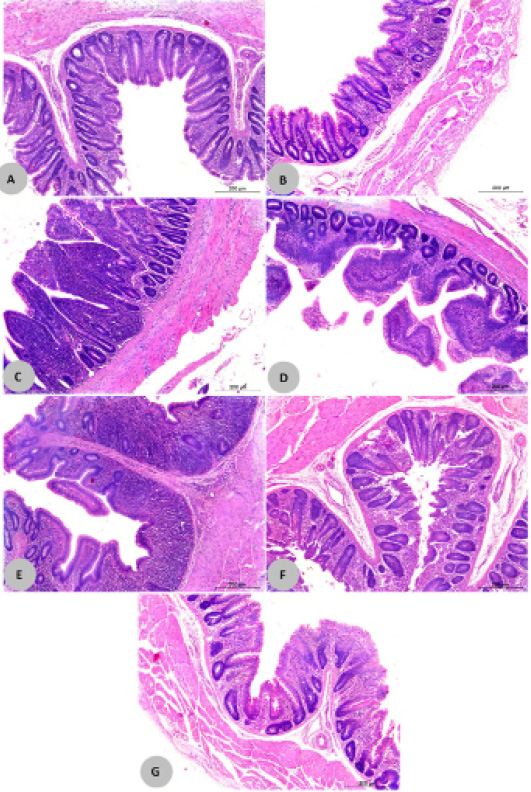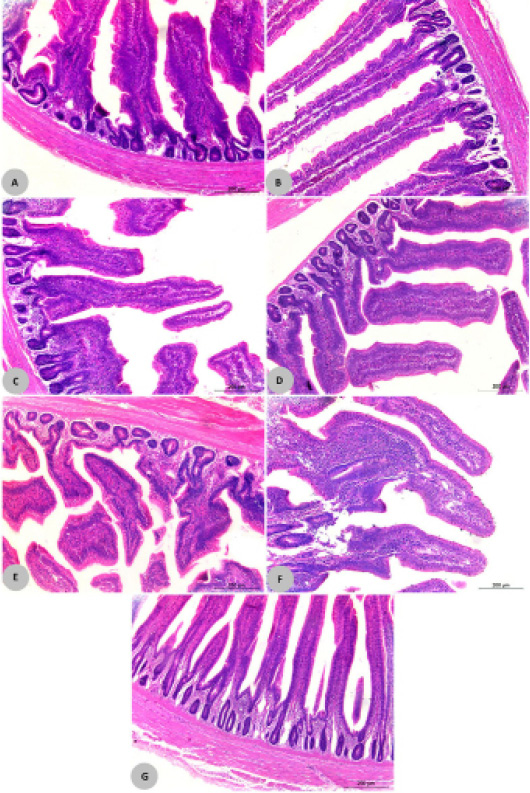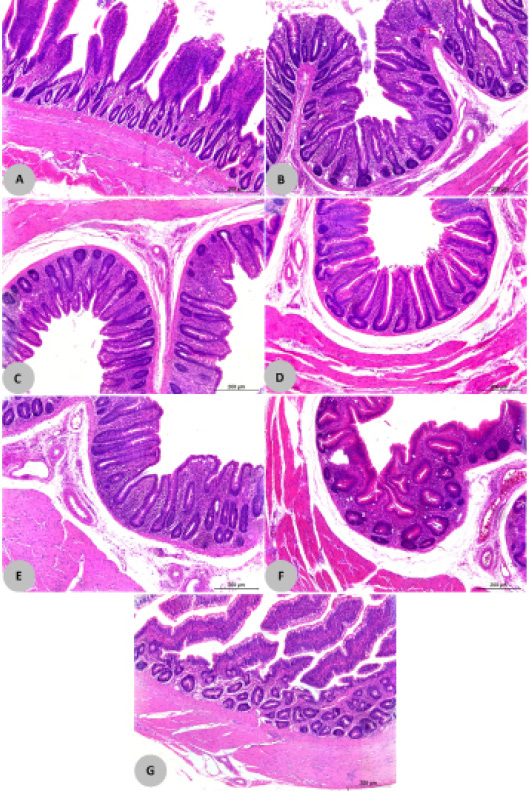Anticlostridial Activity of the Thyme and Clove Essential Oils against Experimentally Induced Necrotic Enteritis in Commercial Broiler Chickens
Anticlostridial Activity of the Thyme and Clove Essential Oils against Experimentally Induced Necrotic Enteritis in Commercial Broiler Chickens
Nashwa Mohamed Eid1, Al-Hussien Mohamed Dahshan1, El-Shayma El-Nahass2, Basma Shalaby3 and Ahmed Ali1*
Comparative C. perfringens re-isolation rates from pooled jejunum and cecum samples of broiler chickens in different experimental groups.
Jejunum histopathology of CP experimentally inoculated EOs treated chicks at 20 days of age (3DPI). (A) Thyme prevention, (B) Clove prevention, (C) Thyme treatment, (D) Clove treatment, (E) Ciprofloxacin treatment, (F) negative control, (G) positive challenge control.
Cecum histopathology of CP experimentally inoculated EOs treated chicks at 20 days of age (3DPI). (A) Thyme prevention, (B) Clove prevention, (C) Thyme treatment, (D) Clove treatment, (E) Ciprofloxacin treatment, (F) negative control, (G) positive challenge control.
Jejunum histopathology of CP experimentally inoculated EOs treated chicks at 25 days of age (7DPI). (A) Thyme prevention, (B) Clove prevention, (C) Thyme treatment, (D) Clove treatment, (E) Ciprofloxacin treatment, (F) negative control, (G) positive challenge control.
Cecum histopathology of CP experimentally inoculated EOs treated chicks at 25 days of age (7DPI). (A) Thyme prevention, (B) Clove prevention, (C) Thyme treatment, (D) Clove treatment, (E) Ciprofloxacin treatment, (F) negative control, (G) positive challenge control.










